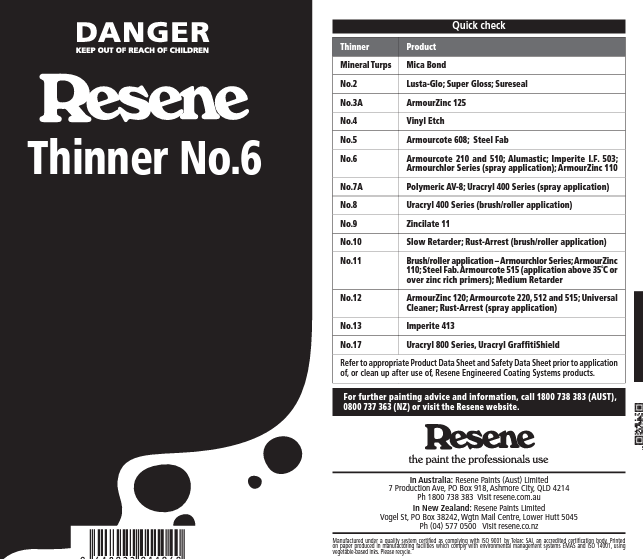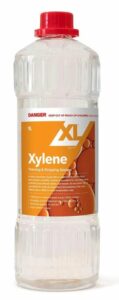How to remove an Everbrite Coating
How to remove an Everbrite Coating depends on whether the coating is wet, dried or cured
Wet Coating
Partially Dried, Dried and Cured Coating
To remove an Everbrite Coating that has partially dried, is dry or has fully cured Xylene Solvent or a Xylene Substitute is used on most surfaces. Xylene Solvent can be used to remove coating on all bare metals, anodised metals, powdercoated metals and fibreglass,
For larger scale projects a fully cured coating can be manually or mechanically sanded off metals like mild steel and corten steel.
Do NOT use Xylene to remove coating from:
- Clear hard plastics as it will cause the plastic to craze and go milky white/cloudy.
- Painted surfaces as it will remove the paint and act like a paint stripper
Where can you source Xylene Solvent?
Which surface types can you safely use Xylene on to remove an Everbrite Coating?
The following substrate types are *safe/stable when Xylene is used to remove an Everbrite Coating
WARNING: If you are unsure about the substrate type it is important to check/test first as Xylene is a strong solvent.
Bare smooth metals
- Aluminium
- Anodised Aluminium
- Brass
- Bronze
- Chrome
- Copper
- Silver
- Stainless Steel
All steels
- Corten
- Galvanised
- Rusted Steel
- Mild Steel
- Stainless Steel
Coloured Metals
- Powdercoated aluminium *
- Powdercoated colour steel *
- Anodised Aluminium
* DO NOT RUB HARD as this may remove some of the colour from the powdercoating. The quality and age of the powdercoating determines if some colour might be removed. Let the Xylene sit on the surface to ‘melt’ the coating and wipe off gently with a lint free rag.
Fibreglass & Plastics
- Fibreglass
- Gel coats
- Some hard plastics (test first)
Surface types you CANNOT use Xylene to remove an Everbrite Coating?
You CANNOT use Xylene to remove an Everbrite Coating off the following substrate types.
Painted Surfaces – DO NOT USE XYLENE
- Painted Signage
- Painted Wood
- Painted Metals
Xylene Solvent cannot be used on painted surfaces as it will act like a paint stripper and remove the paint under the coating.
Clear Plastics – DO NOT USE XYLENE
- Clear Hard Plastics
Xylene Solvent cannot be used on clear plastics because this strong solvent will cause the plastic go milky white and crazed.
How to use Xylene to remove an Everbrite Coating
Wear Protective Eyewear and Nitrile Gloves and protect the area.
Xylene Solvent is strong so it is important to protect your eyes and skin.
- Protective Eyewear Wear appropriate eye goggles. Wrap around eyewear/spectacles should be worn as a minimum.
- Only use solvent resistant NITRILE gloves. DO NOT WEAR rubber/latex gloves as rubber/latex reacts to the coating and the Xylene and become sticky and probably transfer onto the coated surface.
- If required place a sheet of cardboard or canvas drop sheet on the ground, floor for protection.
Use a lint free rag (an old white or faded T Shirt is ideal)
- Depending upon the size of the area to be worked on either soak the lint free rag partially or fully immerse with Xylene.
- Apply the Xylene lightly to the area where the coating needs to be removed.
- Apply more Xylene until the coating starts to soften and wipe off.
- Keep using Xylene on a clean part of the rag until the coating has been removed.
- Place used rags in a plastic bag and close and then discard safely. The smell will go away as soon as the used rags have been closed in a bag. Do not burn your rags – as Xylene is flammable!
Reapplication of coating
- There should be no requirement to reclean the area with EZPrep Cleaner/Neutraliser.
- There should be no requirement to solvent wipe bare metals and anodised aluminium – as long as the first recoat is immediately after the coating has been removed.
Apply the coating in one direction only. It is best to complete one length at a time in smooth light strokes in one direction.
Why would you need to remove an Everbrite Coating?
When the metal has been allowed to retarnish/discolour under the coating.
This is usually caused by:
- Inadequate coating applied initally, or each coat was applied to thinly.
- The coating has been damaged by deliberate scratching, high use and abuse. A remedial maintenance coat or touch up has not been applied in time.
- The wrong coating being applied for the item type and its environment.
- The metal not being cleaned and neutralised (removal of all acid traces) thoroughly before coating application.
When there are discolourations/imperfections starting to appear under the coating after a short while.
This is usually caused by:
- the metal/surface not being adequately cleaned and rinsed well with fresh clean water prior to coating application.
- the metal/surface not being adequately neutralised of all acid traces. Finger prints and hand marks contain acid. Many metal polishes contain acid.
- Moisture in the pores of the metal prior to coating application. This is particulary relevant to mild and corten steels.
- The environment being unsatisactory (wet or humid conditions) when the coating was applied. This is particularly relevant for the first coat.
When the coating application goes wrong.
This is usually caused by:
- the metal being too hot and the coating starts to flash off and dry too quickly to enable the coating to self level
- the metal being too cold and the coating starts to sag as it does not flash off and dry fast enough. This can also be caused by too much coating being on the applicator tool and it not being spread over the surface fast enough.
- the wrong type of applicator tool being used for the project type.
- An incompatible tool being used for the coating.
- Second and subsequent coats being applied too harshly with the applicator tool being moved in both directions, backwards and forwards causing the previous coat to be dragged off.
- The coating being overworked and not left alone to self-level.
Surface Types
Brass, Bronze, Copper and Silver
A maintenance recoat should be applied as soon as metals like bronze, brass, copper and silver start to discolour and darken under the coating or if the coating has been damaged. A maintenance coat adds more antioxidants, UV filters and UV stabilizers to these precoated metals providing further protection from tarnish.
Solution: Remove the coating with Xylene, repolish/remove tarnish and then recoat with the number of recommended coats.




